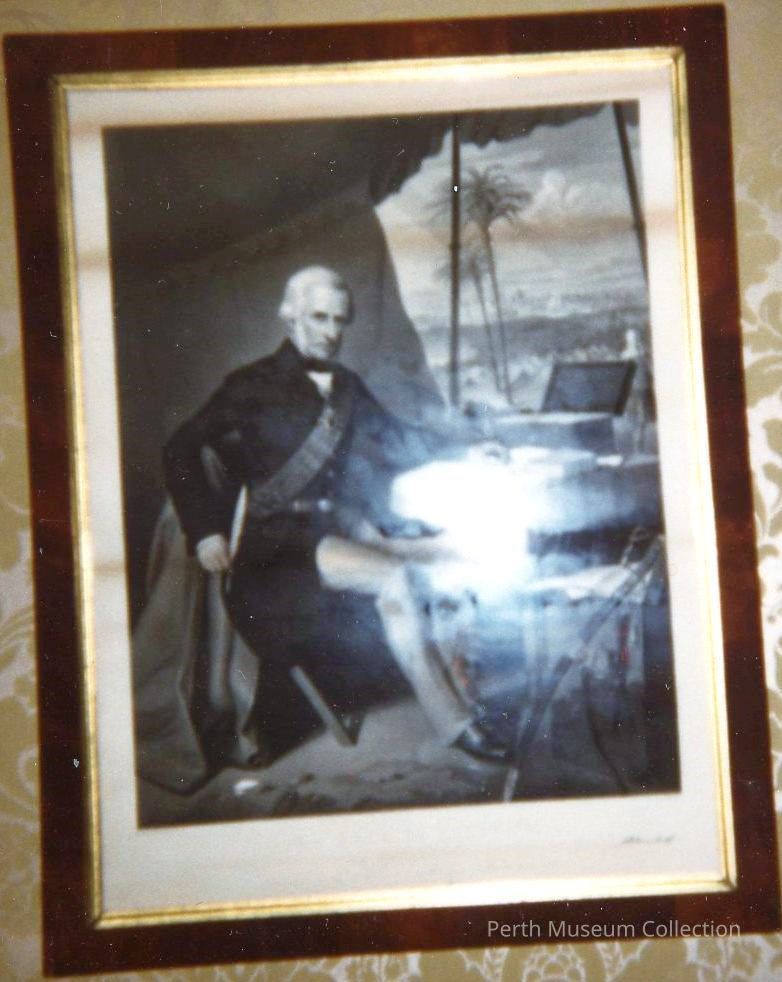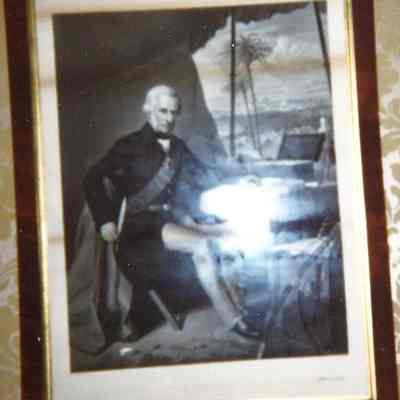Name/Title
Sir Henry HavelockEntry/Object ID
840.1.1Description
This steel engraving of Sir Henry Havelock has always been in the Matheson family and is shown in an old photograph of the dining room hanging near the fireplace. It depicts the gentleman sitting in his military tent, at a writing table with his portable writing box, quill pen in hand. The city of Lucknow can be seen in the distance through the flap in the tent, with palm trees in the foreground. The information on the bottom margin reads: The hero of Lucknow, drawn and engraved by A.H. Ritchie, presented to the Albion subscribers, New York 1859. An engraving of Sir Henry's signature appears in the bottom right hand corner. It is framed in a wide mahogany veneer frame with an inner gilt molding. Dated 1859.
Havelock, Sir Henry (b. April 5, 1795 near Sunderland, Durham - d. Nov. 24, 1857, Lucknow, India)
Havelock was a British soldier who distinguished himself during the Indian Mutiny in 1857.
Raised in a religious environment, Havelock obtained a commission in the army at age twenty, but he spent eight restless years at home while studying military strategy. To join two brothers in India, he changed his regiment and obtained a lieutenancy in the 13th Light Infantry. He served with distinction in the First Anglo-Burmese War (1824-26) but in 1838 was still only a captain and had seen commissions purchased over by him five others. He excelled in the first Afghan war (1839-42) and was made a companion of the Bath, but only later did he receive a promotion, when serving as an interpreter to Sir Hugh Gough in the 1843 Gwalior campaign.
Burdened by ill health and the debts of his eldest son, Havelock took two years home leave beginning in 1849. After returning to India, he was promoted and shared in Sir James Outram's Persian expedition of 1857. Returning in the midst of the Indian Mutiny, he was too late and too weakened by casualties to save Kanpur or Lucknow, but his series of victories in July and August brought him acclaim; in September he broke through on his fourth try to relive the residency at Lucknow. He was rewarded his knighthood (Order of the Bath) and a major generalship.Made/Created
Artist Information
Artist
Ritchie, A.H.Role
ArtistDate made
1859Inscription/Signature/Marks
Location
Bottom right hand cornerTranscription
Sir Henry Havelock
